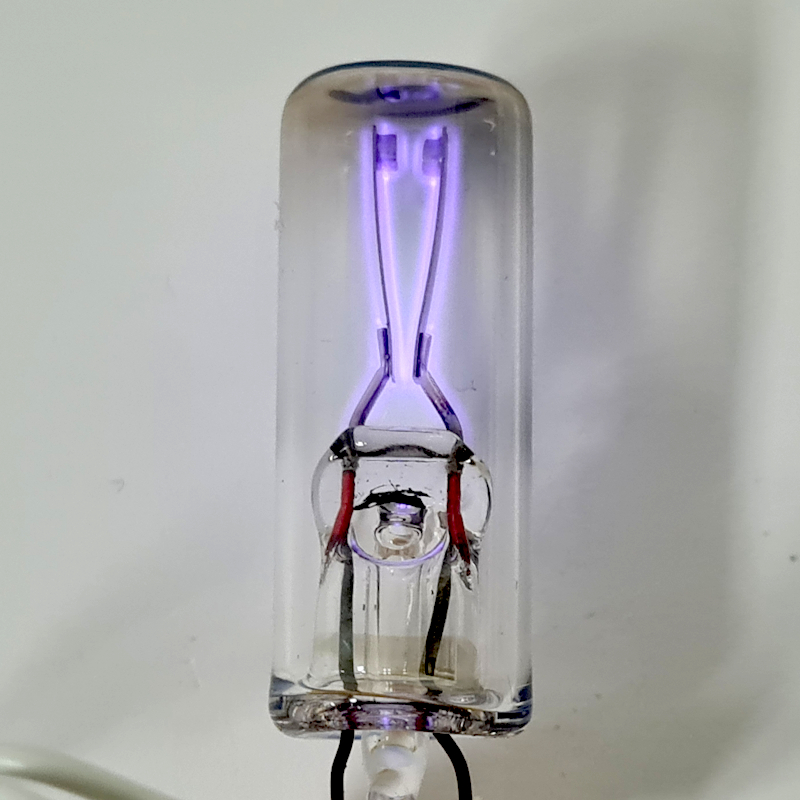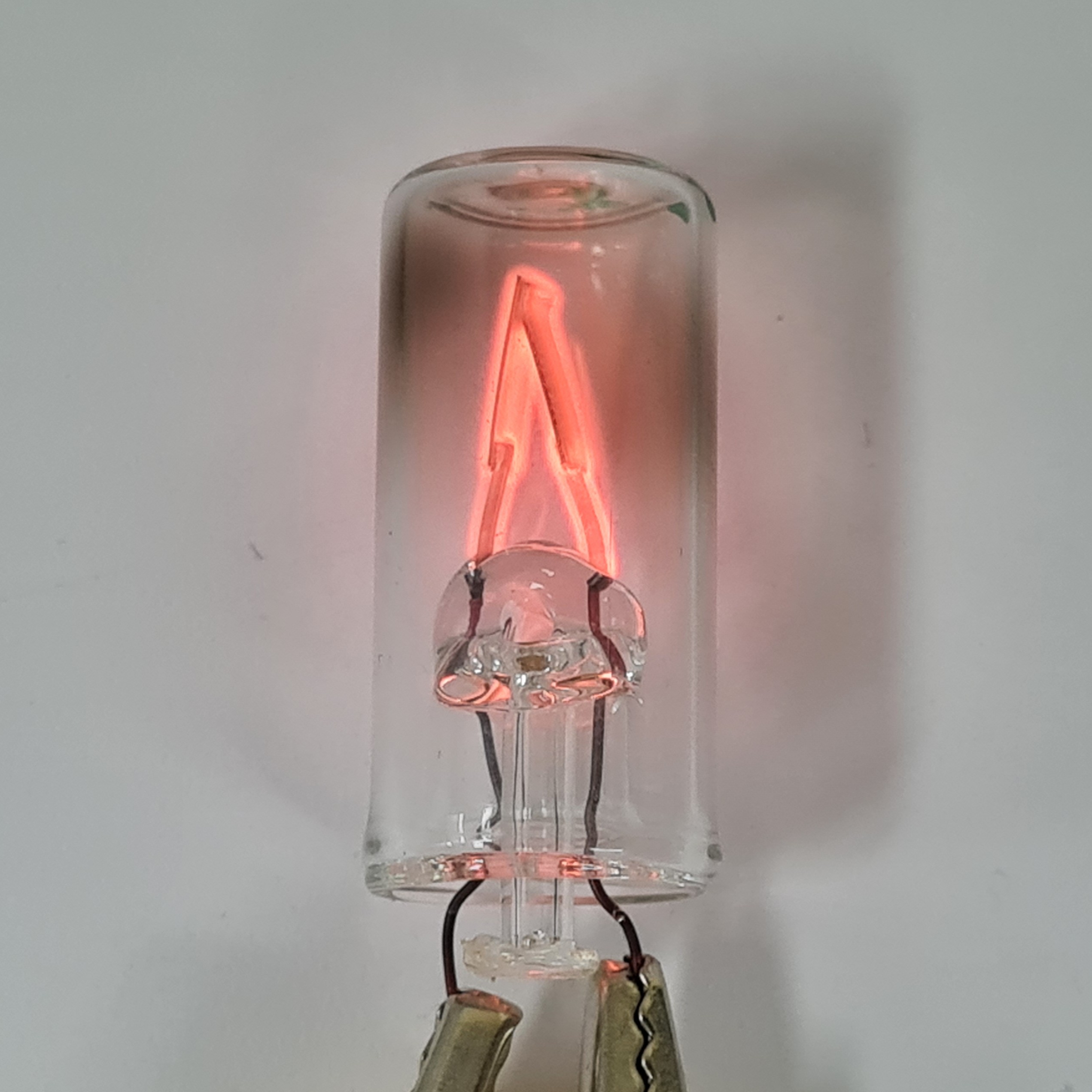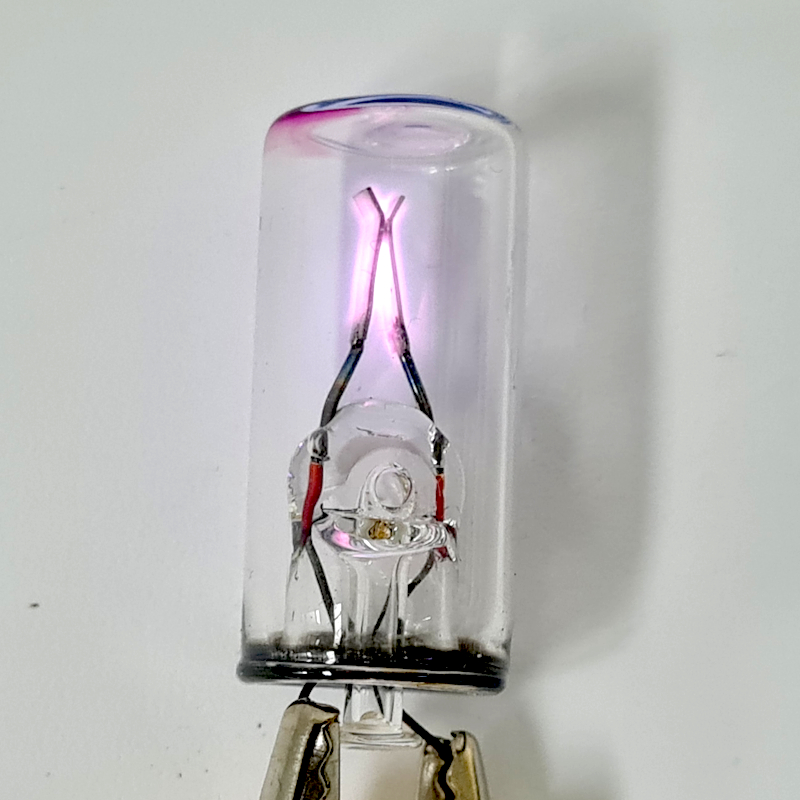


Who would have thought that an inconspicuous fluorescent lamp starter could conceal a whole treasure trove of interesting light sources? So-called starter lamps are built into the small glass tubes that serve as ignition aids. They work on a simple principle: as soon as voltage is applied, the gas inside begins to glow—emitting a characteristic emission spectrum.
These starter lamps are not only crucial for the functioning of fluorescent lamps, but also provide an exciting field of experimentation for lighting technology and spectroscopy. With a DIY spectrometer, the different light colors and spectral lines can be made visible, illustrating the interaction between gas discharge, light emission, and electrical voltage.
For technology enthusiasts, physics students, and anyone interested in light sources and spectral analysis, starter lamps offer a surprisingly easy introduction to the fascinating world of light and spectral research.

Starter lamps are a special type of glow lamp. They consist of a small gas discharge vessel with two electrodes, one of which is designed as a bimetal.
For our experiments, the first phase is particularly interesting: the characteristic glow in which the gas mixture emits its spectrum.
For experiments, starter lamps do not need to be operated with mains voltage. They can be easily operated with inverters for EL foils.
This transforms a »waste product« such as the lamp starter into an inexpensive, easily accessible light source for spectroscopic investigations.
We rummaged through our junk box and salvaged various old starter lamps. The result? Three completely different color moods:
It's obvious to the naked eye: there's more to it than you'd expect from an inconspicuous starter. Now for the reveal—our DIY spectrometer shows which gases are really behind these colors …
To the naked eye, the glow appears almost mysterious—cool, intense, and somewhat extraterrestrial. But the DIY spectrometer quickly provides clarity: distinct peaks between 400 and 500 nm reveal the signature of argon. Thanks to the NIST database (Atomic Spectra Database | NIST)). ¹, these lines can be clearly identified—transforming the mystical glow into a clear fingerprint of the gas.

As soon as it is switched on, the small starter lamp glows in a warm, intense red-orange—almost as if a piece of sunset had been captured. But here, too, the DIY spectrometer reveals the secret: strong peaks around 585 nm and 640 nm match perfectly with the typical emission lines of neon, which can be clearly found in the NIST database (Atomic Spectra Database | NIST) ¹.

If you look even closer, two faint lines suddenly appear that clearly belong to xenon. A small surprise effect, but what is behind it? Are these tiny impurities in the filling gas, or perhaps even an intentional admixture? That remains unclear—but it is certainly intriguing.
The glow of this starter is unusual, a fascinating mixture of cool blue tones and warm orange. What appears to the eye as an atmospheric play of colors is broken down into its components by the DIY spectrometer: superimposed peaks of argon and neon reveal a gas mixture that combines both worlds in one lamp. A beautiful example of how spectroscopy reveals hidden details.

Here we show a spectrum with an integration time of 1 s, in which the strongest argon lines are easily identifiable.
However, with an integration time of 3 s, many more weaker lines appear, especially in the range between 400 and 500 nm. The sensor reaches saturation with the stronger argon lines, which can be seen from the distortions in the upper signal range. However, this does not interfere with the detection of the weaker lines.

Our experiments clearly showed that starter lamps for fluorescent tubes almost exclusively use neon and argon (or mixtures of both) as filling gases. There are several reasons for this:

The familiar flickering when a fluorescent lamp is switched on occurs because the starter does not ignite the tube immediately, but initiates several short discharges in succession:
¹ Kramida, A., Ralchenko, Yu., Reader, J., and NIST ASD Team (2023). NIST Atomic Spectra Database (ver. 5.11), [Online]. Available: https://physics.nist.gov/asd [2024, June 23]. National Institute of Standards and Technology, Gaithersburg, MD. DOI: https://doi.org/10.18434/T4W30F
 Would you like to replicate the experiment—in your laboratory or teaching environment? Feel free to contact us—we will assist you with planning, setup, calibration, and selecting the right components. Eureca offers advice based on many years of expertise in optoelectronics, optics and spectroscopy—from DIY setups to OEM solutions. Feedback is expressly welcome: Please share your experiences, results, or suggestions for improvement with us.
Would you like to replicate the experiment—in your laboratory or teaching environment? Feel free to contact us—we will assist you with planning, setup, calibration, and selecting the right components. Eureca offers advice based on many years of expertise in optoelectronics, optics and spectroscopy—from DIY setups to OEM solutions. Feedback is expressly welcome: Please share your experiences, results, or suggestions for improvement with us.
Here you can easily ask a question or inquiry about our products:
Last update: 2025-30-10
